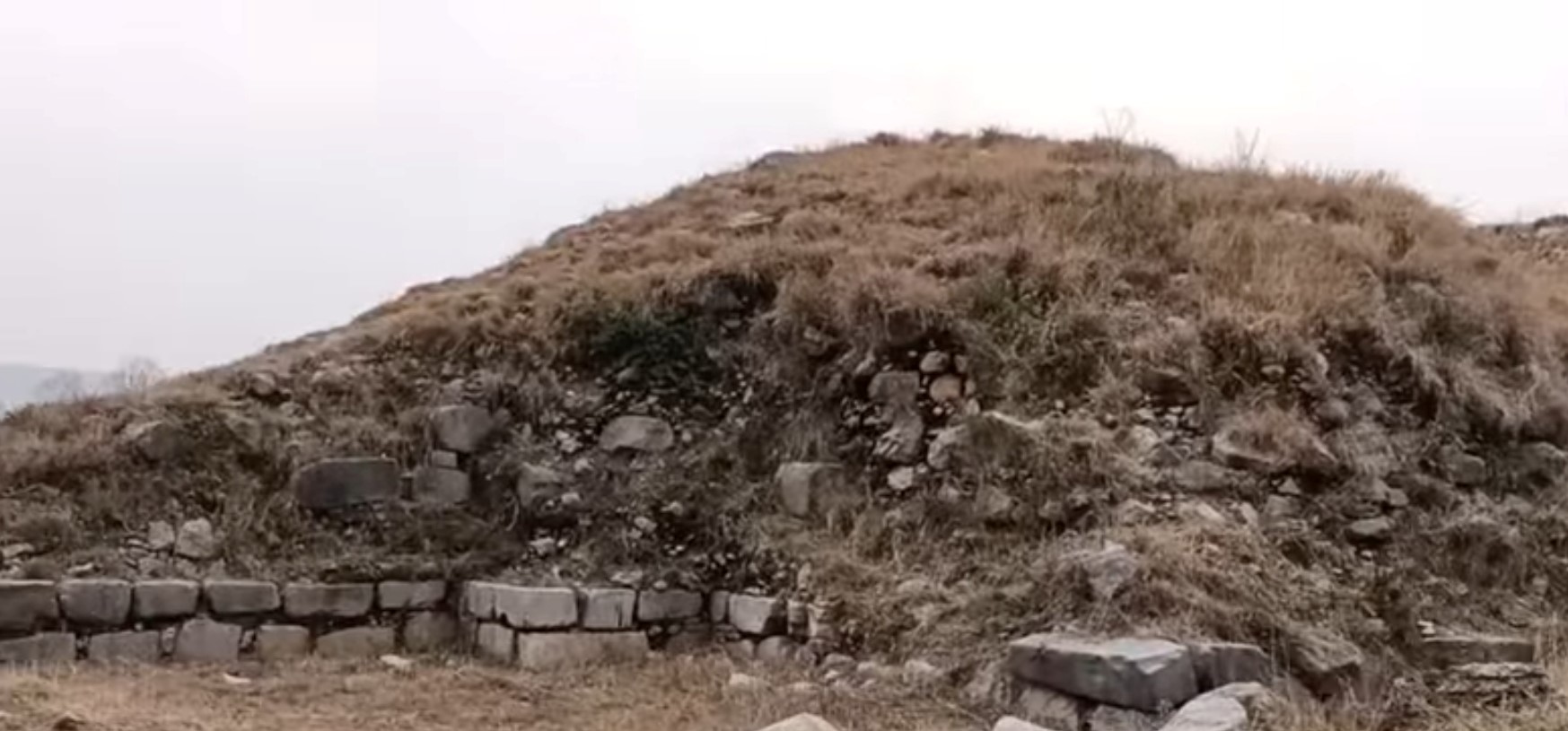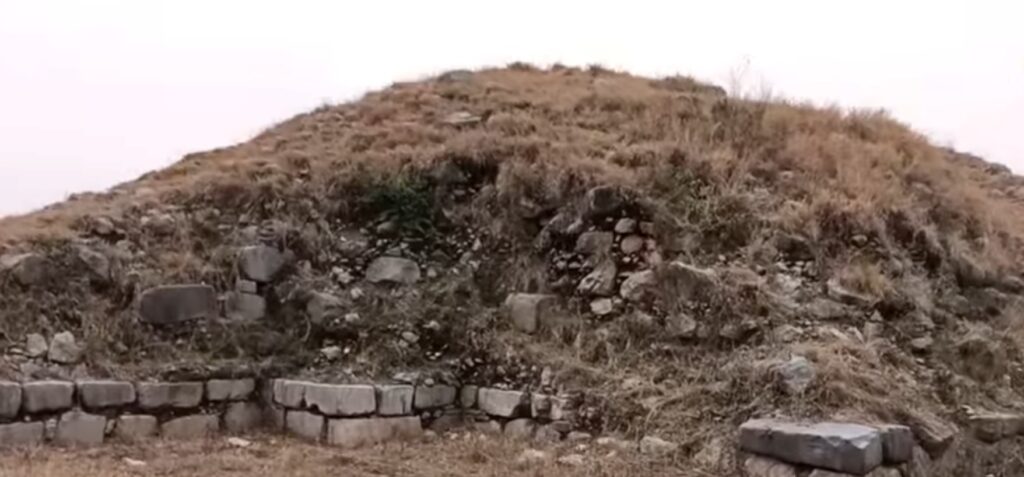The Badalpur Stupa near Taxila is an ancient square-based stupa that reflects the unique blend of Indian and Greek styles in art and architecture that characterized the Gandhara region. Its historical and cultural significance as a place of worship and pilgrimage for Buddhists during ancient times and as a testament to the region’s rich heritage make it a must-visit destination for anyone interested in history, art, and culture.
Badalpur Stupa Dimensions
Badalpur Stupa is one of the largest and most impressive stupas in the Taxila region, measuring 24.4 m x 23 m (80 x 75 ft) and having a speculated height in excess of 21 meters (70 ft) with the Chattravali included. It is believed to date back to the 2nd – 5th century CE, during the Kushan Empire‘s reign, making it over a thousand years old.
The Badalpur Stupa’s square base sets it apart from the other stupas in the region, which are mostly circular or hemispherical. The square shape is a unique architectural feature that reflects the influence of both Indian and Greek styles in the Gandhara region‘s art and architecture.
Badalpur Stupa History
 At the heart of Badalpur stands one of the most significant stupas within the Taxila region. Today, the site is a mound covered with earth and rock, but its history paints a different picture. Roughly 1700 years in the past, this mound was a thriving center of Buddhist worship, resonating with the chants of devotees.
At the heart of Badalpur stands one of the most significant stupas within the Taxila region. Today, the site is a mound covered with earth and rock, but its history paints a different picture. Roughly 1700 years in the past, this mound was a thriving center of Buddhist worship, resonating with the chants of devotees.
Historical records suggest that the stupa was erected during the Kushan period, spanning between the 2nd and 5th centuries BCE. Serving as a majestic focal point for spiritual activities, this stupa held profound importance for the Buddhist community of its time.
The stupa’s interior is believed to have once contained relics of the Buddha or one of his disciples. The exterior of the stupa is adorned with intricate carvings and designs, depicting scenes from the life of the Buddha and other religious figures. The carvings are a testament to the artistic skills and craftsmanship of the Gandhara region’s people, who were known for their expertise in stone carving and sculpture.
The Badalpur Stupa is an important historical and cultural site that sheds light on the rich heritage of the Gandhara civilization. It attracts visitors from all over the world who are interested in exploring the region’s history and culture. The stupa’s grandeur and architectural design make it a must-visit destination for anyone interested in ancient art and architecture.
Buddhist Architecture in Badalpur Stupa
 The Badalpur Stupa is not only a testament to the artistic skills and craftsmanship of the Gandhara region but also reflects the region’s religious and cultural significance. The stupa’s construction indicates the presence of a Buddhist community in the region, and it likely served as a place of worship and pilgrimage for Buddhists during ancient times.
The Badalpur Stupa is not only a testament to the artistic skills and craftsmanship of the Gandhara region but also reflects the region’s religious and cultural significance. The stupa’s construction indicates the presence of a Buddhist community in the region, and it likely served as a place of worship and pilgrimage for Buddhists during ancient times.
The stupa’s location near Taxila, which was a hub of learning and culture during ancient times, also reflects the region’s importance as a center of Buddhist activity and scholarship. Taxila was home to several Buddhist monasteries and universities, where monks and scholars from across the region would come to study and learn.
The Badalpur Stupa is one of the many ancient sites in the region that bear testimony to the rich history and culture of the Gandhara civilization. The region’s unique blend of Indian and Greek styles in art and architecture reflects the region’s position as a crossroads of different cultures and civilizations.
Today, the Badalpur Stupa remains an important site for both tourists and locals, who come to marvel at its grandeur and learn about its history and cultural significance. The stupa’s preservation and conservation are crucial for maintaining its rich heritage and ensuring its availability for future generations.
In conclusion, the Badalpur Stupa near Taxila is an ancient square-based stupa that is one of the largest in the region. Its unique architecture, intricate carvings, and historical significance make it a must-visit destination for anyone interested in ancient art and architecture. The stupa’s preservation and conservation are crucial for maintaining its rich heritage and ensuring its availability for future generations.







